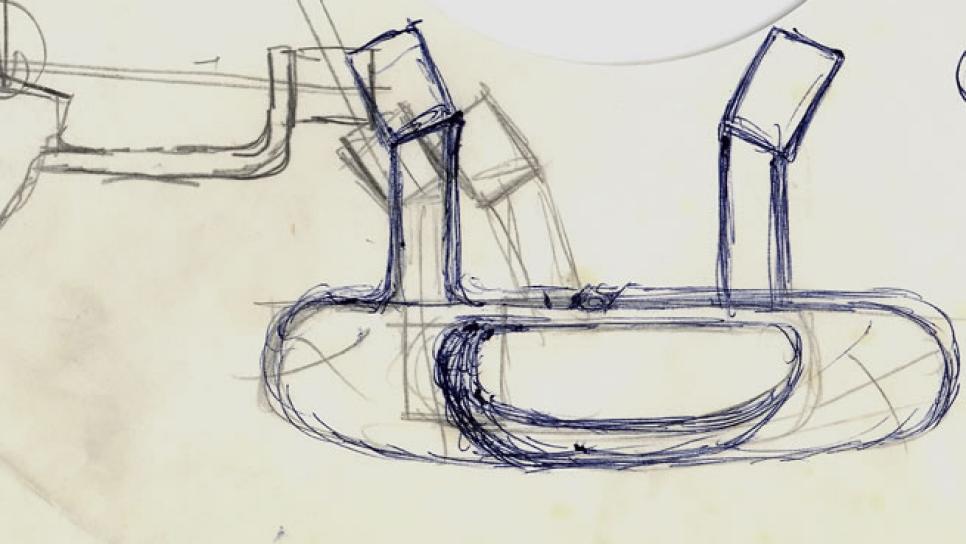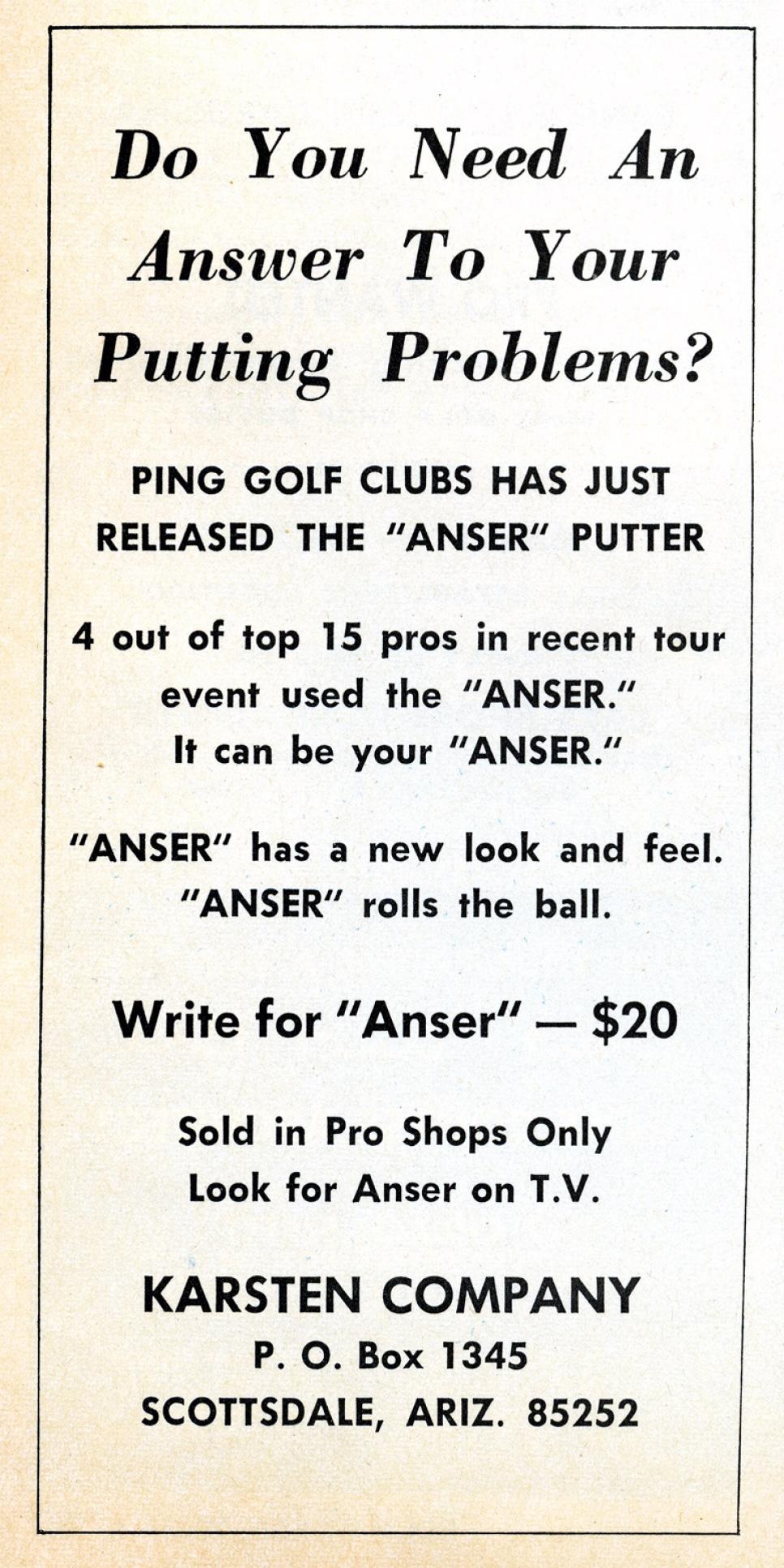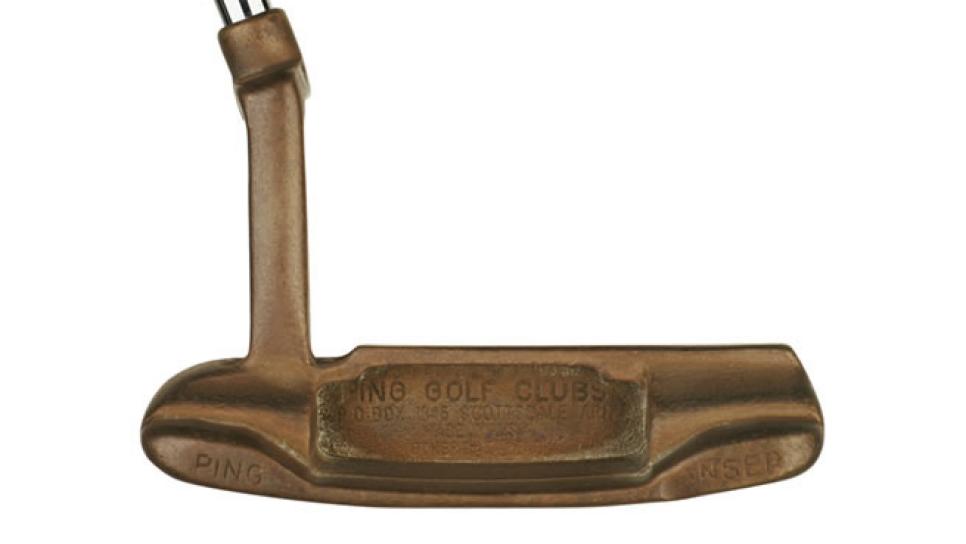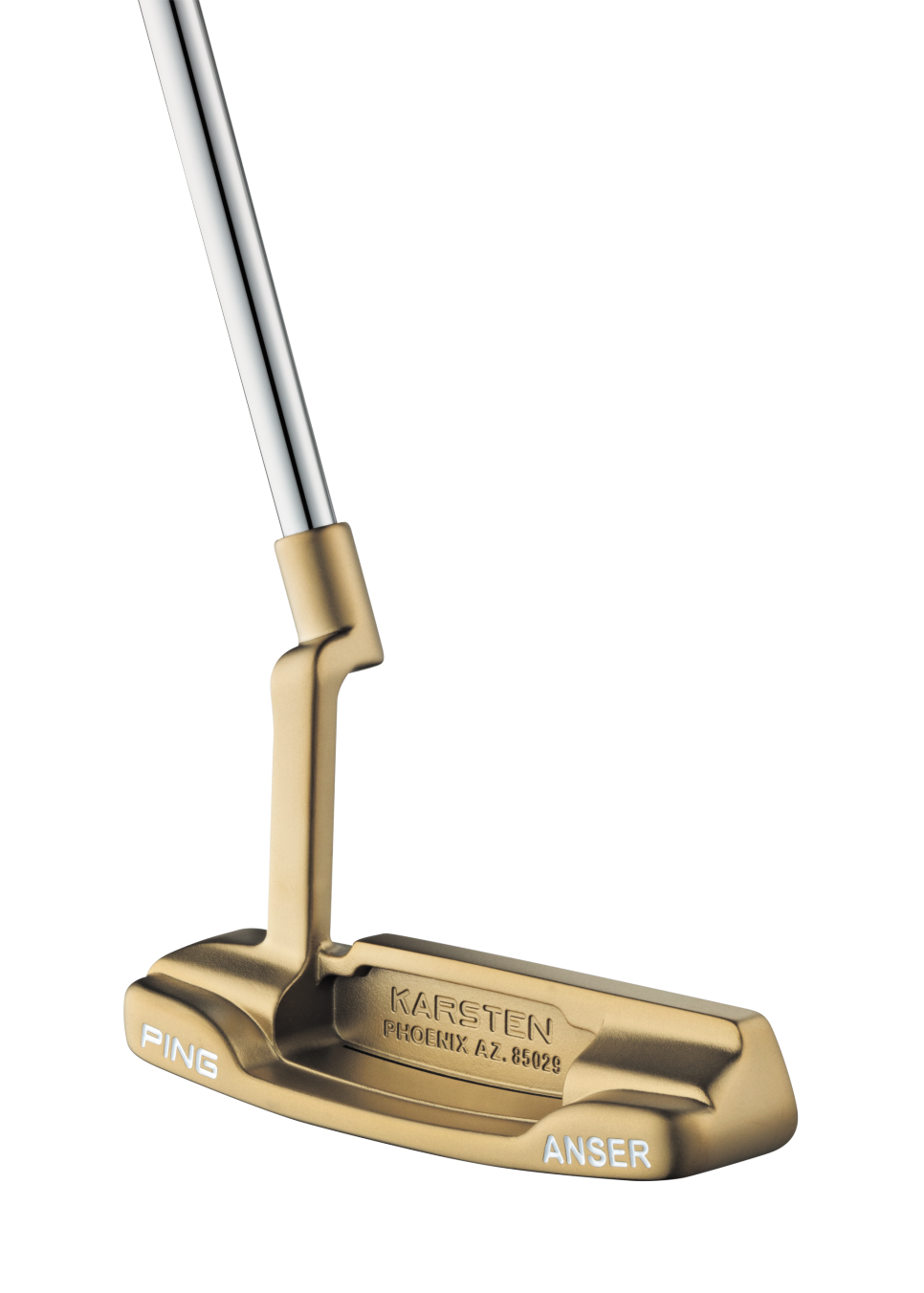The Loop
How the Ping Anser putter, one of the most iconic clubs in golf history, came to be
The most popular putter style of all time started with a drawing on a 78 r.p.m. record jacket.
That is the canvas Karsten Solheim, a Norwegian-born engineer who worked on jet fighters and missile guidance systems after World War II, used to sketch the Ping Anser putter in January 1966. A few weeks later, Solheim brought the club to the PGA Tour’s Phoenix Open and piqued the interest of players such as George Archer, Kermit Zarley and Gene Littler—all who soon put it in play. In March of the following year, Solheim would receive a patent for what would come to be perhaps the most iconic putter model the game has ever known.

The bottom of the dust jacket that Karsten Solheim used to create the initial design of the Ping Anser putter.
As the Anser turns 50, the model continues to resonate with tour players and everyday golfers alike. At this week’s Waste Management Phoenix Open, several players used Ping Ansers. Additionally, many Anser-style putters from other manufacturers—after Solheim’s patent expired in 1984, it spawned a slew of copycats that continues to this day—also were used.
Solheim tried his hand at golf in 1953 and soon attempted to lower his scores by applying what he called “the simplest laws of physics and mechanics” to make a more efficient putter. He had some early success with his 1-A model, but it was the Anser that became the golf standard for putters.
The record-jacket drawing was not unusual for Solheim. “He was a paper and pencil kind of designer,” Ping CEO John A. Solheim once said of his father. “He would explain things and then he would have to draw it to get his point across.”
How the club got its name is nearly as interesting as how it was designed. Karsten had told his wife, Louise, he was determined to find an answer to the flaws of other putters used at the time. The day before Solheim produced his brainchild, the couple was at the engravers going over details when Louise suggested he call it the Answer. Karsten balked, saying it was no name for a putter and, besides, the name wouldn’t fit on the toe. Louise held her ground and said, “Just leave out the w.” After Karsten could not come up with a better idea, the name was employed.

The original ad for the Ping Anser that appeared in Golf World in 1966.
Originally called a “plumber’s nightmare” due to its unusual hosel design, the original club also had some durability issues. The first putters were made out of brass—a very soft metal. One day Solheim caught Arnold Palmer on the putting green and handed one to him. Palmer looked at it and told Solheim the face was caved in. As it turned out, someone had dropped the club and dented the face. From that point on, Solheim decided to use high-strength manganese bronze instead.

George Archer became the first golfer to win a major with a Ping Anser putter when he was victorious at the 1969 Masters.
Although Solheim missed out on Palmer, the Anser caught on with most everyone else. Archer was one of the best putters on tour and won the first major with it at the 1969 Masters. Other big names to use the Anser early on included Gary Player and Tony Jacklin. Later on Scott Verplank used his Anser for more than 22 consecutive years, and Tiger Woods used an Anser as a junior and college player, as well as played an Anser 2 during the 1998 PGA Tour season. To this day Woods still uses a Ping grip on his putter.
At the club’s high-water mark in the mid-1970s, more than half the putters in play on the PGA Tour were Ansers. The club dominated sales at retail, too. The success came at a crucial time for Solheim. About to be transferred by General Electric, Louise convinced Karsten he was selling enough putters to go into the club-making business full-time.

Louise Solheim's encouragement helped her husband, Karsten, push forward into the golf business.
That was a solid call on Louise’s part. Since that time there have been some 15 iterations of Anser putters, and no family of putters has been introduced by Ping without an Anser style.
It has had its imitators as well, and today there’s another notable copycat of the club. Only this one comes from Ping. The company has introduced its TR 1966 line of putters, which consists of the TR 1966 Anser and TR 1966 Anser 2 models. To make the new models spot on to the originals, Ping engineers relied on scans of the original Anser and Anser 2 to study the contours and radius details that Karsten, who died in 2000 at age 88, shaped into the designs, as well as the hallmark sound slot in the sole.
